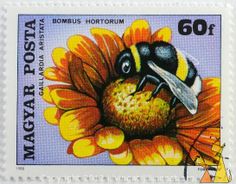Three of the 15 bumble bee species found in Vermont are thought to be extinct and at least one other species is in decline. Bumble bees pollinate crops such as apples, blueberries and tomatoes, making them critical to Vermont’s agricultural economy. Sara Zahendra, a field biologist with the Vermont Center for Ecostudies, says losing native bumble bees is cause for serious concern. “There’s a lot that’s bad about losing native bumble bees,” she said. “One of the main things is that they are far and away the best pollinators of tomatoes. Where there aren’t a lot of native bumble bees, people have to hand-pollinate, which is incredibly expensive.” Native bumble bees are more important than honeybees for crop pollination. Leif Richardson, an entomologist at Dartmouth College, said in a VCE news release that “Wild bees perform the majority of all pollination on Vermont farms, whether or not the managed honeybee is present.” “As an ecosystem service, pollination is worth millions annually,” Richardson continued. “But we don’t know how the loss of native bee species will affect our food supply or overall environmental health.”
The bee declines cannot be attributed to one single cause. “There are probably a multitude of reasons,” Zahendra said. “All of them put together are causing a severe decline in some species.”
The causes include pesticides, the worst of which, for bees, are a class called neonicotinoids. The most commonly used neonicotinoid is imidacloprid, which is sold at lawn and garden stores.
Pathogens accidentally imported to the U.S. from Europe are also taking their toll. Between 1992 and 1994, commercial beekeepers shipped U.S. queen bumble bees to Europe. There, beekeepers reared colonies and then returned the queens and their colonies to the United States. Bee experts suspect that while in Europe, these bees picked up European pathogens against which our native bees have little resistance.
On top of these threats, changes in land use reduce food sources and nest sites for bumble bees. “The more flowers we cut down, the fewer bumble bees there are to gather pollen and nectar from those flowers,” Zahendra said.
Source: VT Digger, 3 December 2013
http://vtdigger.org/2013/12/03/vermonts-bumble-bee-populations-declinin…

- Log in to post comments
